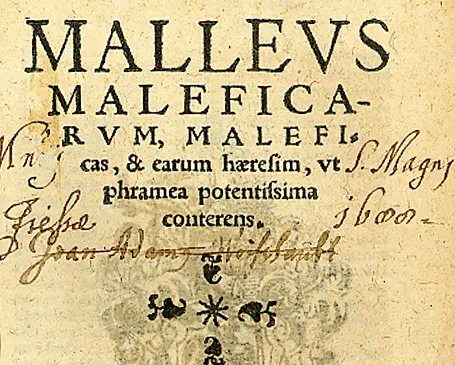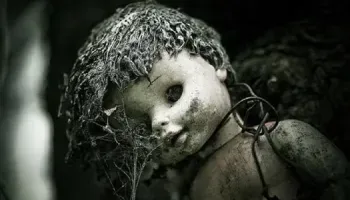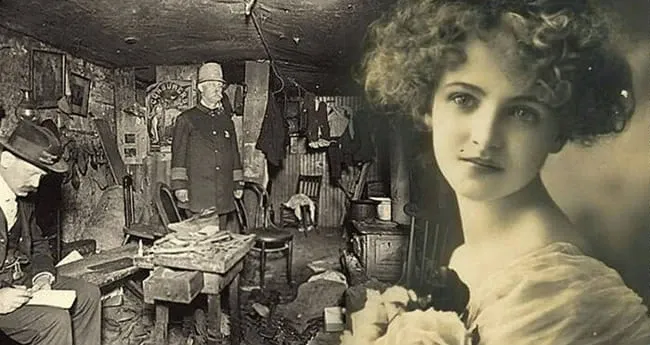Il Malleus Maleficarum
The Malleus Maleficarum, also known as the “Hammer of Witches,” is one of the most famous and influential treatises on witch hunts. First published in 1487, it was written by the German Dominican friars Heinrich Kramer (Henricus Institoris) and Jacob Sprenger. This book played a crucial role in promoting and justifying the persecution of witches in Europe, contributing to the spread of fear of witchcraft and the subsequent witch hunts that lasted for several centuries.
Content and Purpose
The Malleus Maleficarum is divided into three main parts:
First Part: The Nature of Witchcraft and Its Reality
The first part of the Malleus Maleficarum is dedicated to the theological and philosophical demonstration of the existence of witchcraft and its connection to heresy. The authors, Heinrich Kramer and Jacob Sprenger, address various topics to convince readers of the reality of witches and their danger to Christian society.
- Proof of the Existence of Witchcraft: The authors attempt to refute skeptics who deny the existence of witchcraft. They cite the Scriptures, Church Fathers, and various theologians to support the idea that the devil can act in the world through his servants, the witches. According to the treatise, denying witchcraft is equivalent to denying the Christian faith, as the existence of witches is, according to the authors, well documented in the Bible and ecclesiastical tradition.
- The Power of the Devil and Witches: The first part explores how the devil can influence the physical world and how witches, having made a pact with the devil, are able to wield supernatural powers. These powers include the ability to fly, transform into animals, influence the weather, and harm people and property. The authors claim that witches obtain these powers through sacrilegious rites and the renunciation of the Christian faith.
- The Sex of Witches: A significant portion of this section is dedicated to justifying why women are considered particularly vulnerable to the devil’s influence. The authors argue that women, being “weaker” in faith and morally weaker than men, are more prone to falling into the heresy of witchcraft. This part of the treatise is often criticized for its explicit sexism, as it describes women as intrinsically more sinful and susceptible to evil.
Second Part: Forms of Maleficium and Witch Activities
The second part of the Malleus Maleficarum focuses on the specific practices of witchcraft and the types of harm that witches are capable of inflicting. It is a sort of catalog of the various malefactions that witches can commit, with detailed descriptions of their actions and effects.
- Types of Maleficium: The authors list various forms of maleficium that witches can perform. These include infertility (in people and animals), sudden death, illness, crop destruction, storms, and control of natural events. It was believed that witches could cause such disasters through occult rites, magical formulas, and spells.
- Methods and Practices of Witchcraft: This section describes in detail the methods that witches use to perform their maleficium. It includes descriptions of satanic rituals, the use of cursed objects, and the creation of potions. The authors also describe how witches can perform maleficium at a distance and influence victims without being physically present.
- Collaboration with the Devil: The authors claim that witches are able to perform such malefic acts only through direct collaboration with the devil. The Malleus Maleficarum describes how witches make pacts with the devil, renouncing Christian baptism, and how the devil grants them powers in exchange for their soul and loyalty. Witches are described as servants of the devil, who act to spread evil and destruction on Earth.
Third Part: Judicial Procedures Against Witches
The third part of the Malleus Maleficarum is a practical guide for judges, inquisitors, and local authorities on how to identify, prosecute, and punish witches. It is the most pragmatic and controversial section of the book, as it provides detailed instructions on how to conduct witch trials.
- Identification of Witches: The authors provide a series of signs and suspicious behaviors that may indicate that a person is a witch. These include the presence of “devil’s marks” on the body, confession under torture, and testimony from others claiming to have seen the person commit acts of witchcraft. Additionally, dreams and visions are also considered valid evidence.
- Interrogation and Torture: One of the grimmest sections of the Malleus Maleficarum deals with the interrogation of suspected witches. The authors justify the use of torture as a means of obtaining confessions, believing that torture is necessary to overcome the presumed “protection” that the devil grants to witches. Guidelines are provided on how to apply torture and how to interpret confessions obtained, often under extreme pain.
- Trial and Condemnation: The book describes the legal process to follow once a confession is obtained. It outlines the types of punishment, ranging from exile to death by burning, the most common penalty for witches. The authors also discuss exemptions and reductions in sentence for those who cooperate or show signs of repentance, though these are rare.
- Handling False Accusations: Although the Malleus Maleficarum promotes the idea that witchcraft is widespread and dangerous, it also acknowledges the possibility of false accusations. The authors advise some caution in accepting accusations without sufficient evidence, although, in practice, many innocent people were still accused and condemned.
Historical Impact
The Malleus Maleficarum had a tremendous impact on European society between the 15th and 17th centuries. It was used as a manual by ecclesiastical and secular courts to identify, prosecute, and condemn alleged witches. The book contributed to the belief that women were particularly susceptible to the devil’s influence, leading to a massive number of accusations and persecutions, primarily against women.
The Malleus Maleficarum legitimized torture as a means to obtain confessions, and its instructions heavily influenced witch hunts throughout Europe. Although some contemporary theologians and jurists criticized the work, it was widely accepted and used, especially in Germany, France, and Italy.
Criticisms and Decline
Over time, the influence of the Malleus Maleficarum began to wane. The rationalism of the Enlightenment led to increased criticism of superstitions and violent practices promoted by the book. By the 18th century, witch hunts declined and the ideas contained in the Malleus Maleficarum were increasingly contested and ridiculed.
However, the Malleus Maleficarum remains an important historical document, offering a disturbing insight into how fear, superstition, and intolerance can lead to large-scale violence against vulnerable groups.
 Subscribe to our YouTube channel
Subscribe to our YouTube channel





